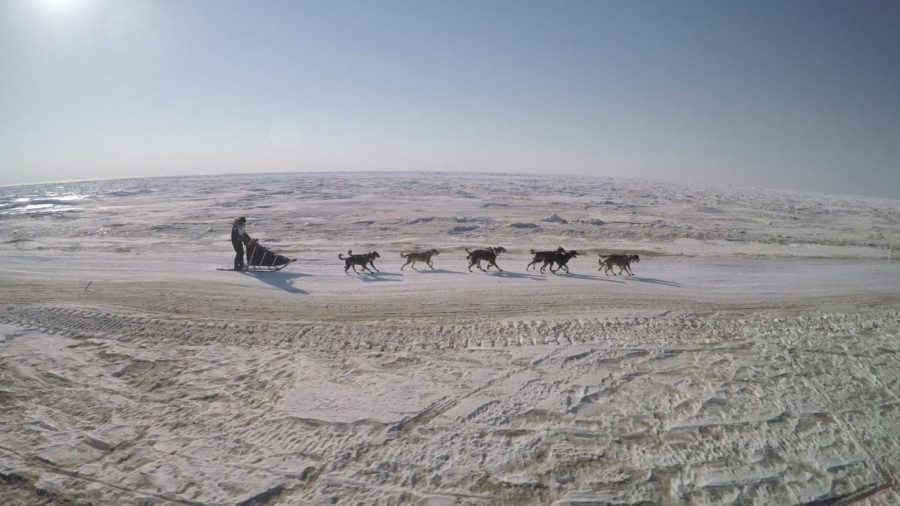Documentary Advocates to Let the ‘Sled Dogs’ Out
A scene from the documentary “Sled Dogs” by Fern Levitt shows the hardships of the dog sledding competition.
February 5, 2018
If your only point of reference for dog sledding is the 2002 Cuba Gooding Jr. movie “Snow Dogs,” documentarian Fern Levitt wants you to know that it’s not all fun and games. For the dogs involved, dog sledding is an incredibly demanding sport that has crossed the line into animal cruelty.
NYU’s Student Animal Legal Defense Fund and the New York City Bar Animal Law Committee co-hosted a screening of the documentary, “Sled Dogs,” about the Iditarod Trail Sled Dog Race. The screening was followed by a Q&A with Levitt, the movie’s director; Executive Producer Arnie Zipursky and Animal Legal Defense Fund Executive Director Stephen Wells.
The 2017 documentary unveils the unethical treatment of sled dogs in the mushing business and the cruel truths of Alaska’s famous Iditarod — “the last great race.” Akin to “Blackfish,” this documentary aims to raise awareness about the mistreatment of animals. The film confidently reveals issues with the dog sledding industry. However, a few technical aspects and decisions are overlooked.
Some elements of the film’s production, including cinematography and music, feel generic at times. Nonetheless, the way in which the documentary immerses the viewer in the dog sledding world is incredibly interesting.
The film sometimes misses the point, an admittedly difficult feat when dealing with such a topic as severe and controversial as animal cruelty. As a documentary, the film doesn’t present anything technically or artistically outstanding, but it does deliver an important truth about animal cruelty in dog sledding.
The Q&A portion of the event allowed for deeper insight into the documentary and the filmmaker’s personal activism. Levitt, Zipursky and Wells echoed that as a result of their efforts, more people are becoming aware of the sport’s cruelty. In fact, many big funders of the industry are dropping out. They went on to say that although politicians and legislation haven’t exactly met the public’s opinion on animal cruelty, local activism and city laws are helping to save more animals.
One point Levitt addressed in the Q&A was people’s self-blinding nature. Her plan was to tackle this fault directly, to shock viewers into helping these animals and to connect it to the financial impacts of these choices.
“Hit ‘em where it hurts,” Levitt said of her strategy. “In the pocketbook, spread the issue like ‘Blackfish’ so that these dogs can get help.”
Levitt also acknowledged the distorted love between the dog owners and their dogs: to them, the dogs are closer to property than family.
“Loving something is putting its well-being first and being aware enough to take care of it,” Levitt said in a Q&A session. “But at the end of the day, people are selfish and want what they want, sometimes without even thinking.”
Levitt finished by noting the censorship she’s encountered in her attempts to spread her message — many of her screenings have been denied and she was almost sued — but she is steadfast and optimistic, ready to face those challenges because she believes in her cause.
A version of this article appeared in the Feb. 5 print edition. Email Tristen Calderon at [email protected].
























































































































































